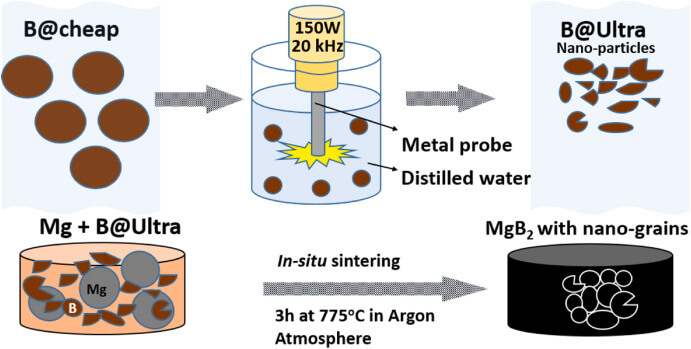Researchers from the Shibaura Institute of Technology used ultrasonic treatment to clean
In their work, the researchers dissolvedcrystalline boron in distilled water. The resulting solution was subjected to ultrasonic treatment with waves with a frequency of 20 kHz. Scientists experimented with the exposure period, the best results were achieved with sonication for half an hour.
The authors of the work note that, using the obtainedcrushed boron nanoparticles, they created samples of magnesium diboride with a purity of about 95%. This is vastly superior to the most popular ball mill method. In addition, the obtained samples had an improved microstructure and magnetic properties.
 Scheme of ultrasonic cleaning of boron to create magnesium diboride. Image: Sai SrikanthArvapalli et al., Ceramics International
Scheme of ultrasonic cleaning of boron to create magnesium diboride. Image: Sai SrikanthArvapalli et al., Ceramics International
Ultrasonic cleaning has been used previously forthe creation of magnesium diboride, but in previous studies, scientists used ethanol or hexane, the authors of the new technology say. This makes the process significantly more expensive. The use of distilled water reduces the cost of magnesium purification and, as a result, the production of superconductors.
Ceramic superconductors based on diborideMagnesium have attracted interest due to ease of manufacture, low weight and low cost. They have found application as an alternative to rare earth metals in the creation of MRI and CT scanners. However, for the widespread production of such superconductors, a cheap and efficient technology for purifying boron is required, the authors note.
Read more:
Physicists have found a universal "clock" in space: they are more accurate than atomic
Archaeologists have found drawings of creepy people with huge heads: who they were
The James Webb telescope took the first picture of Jupiter: it shows 9 moving targets at once